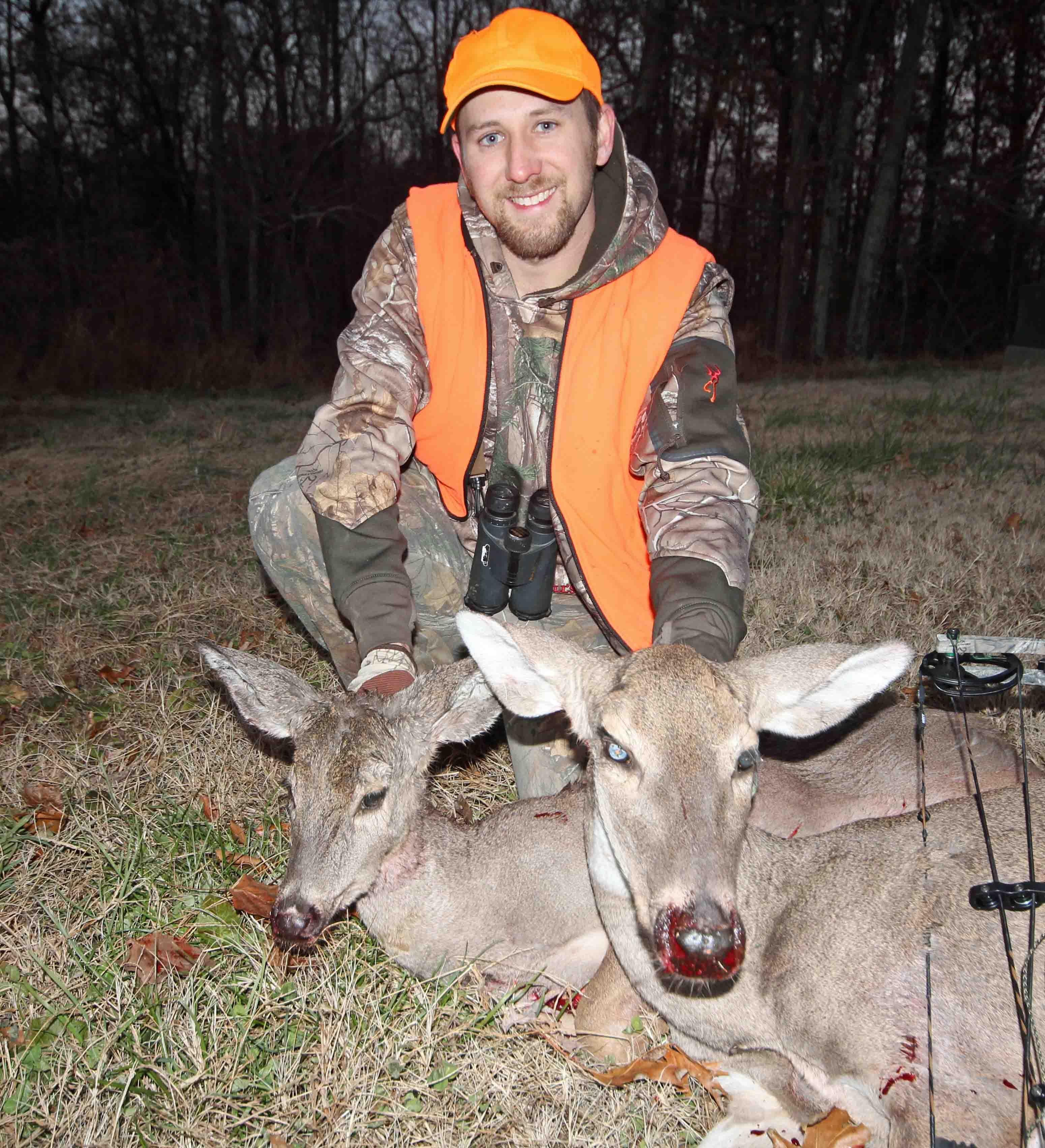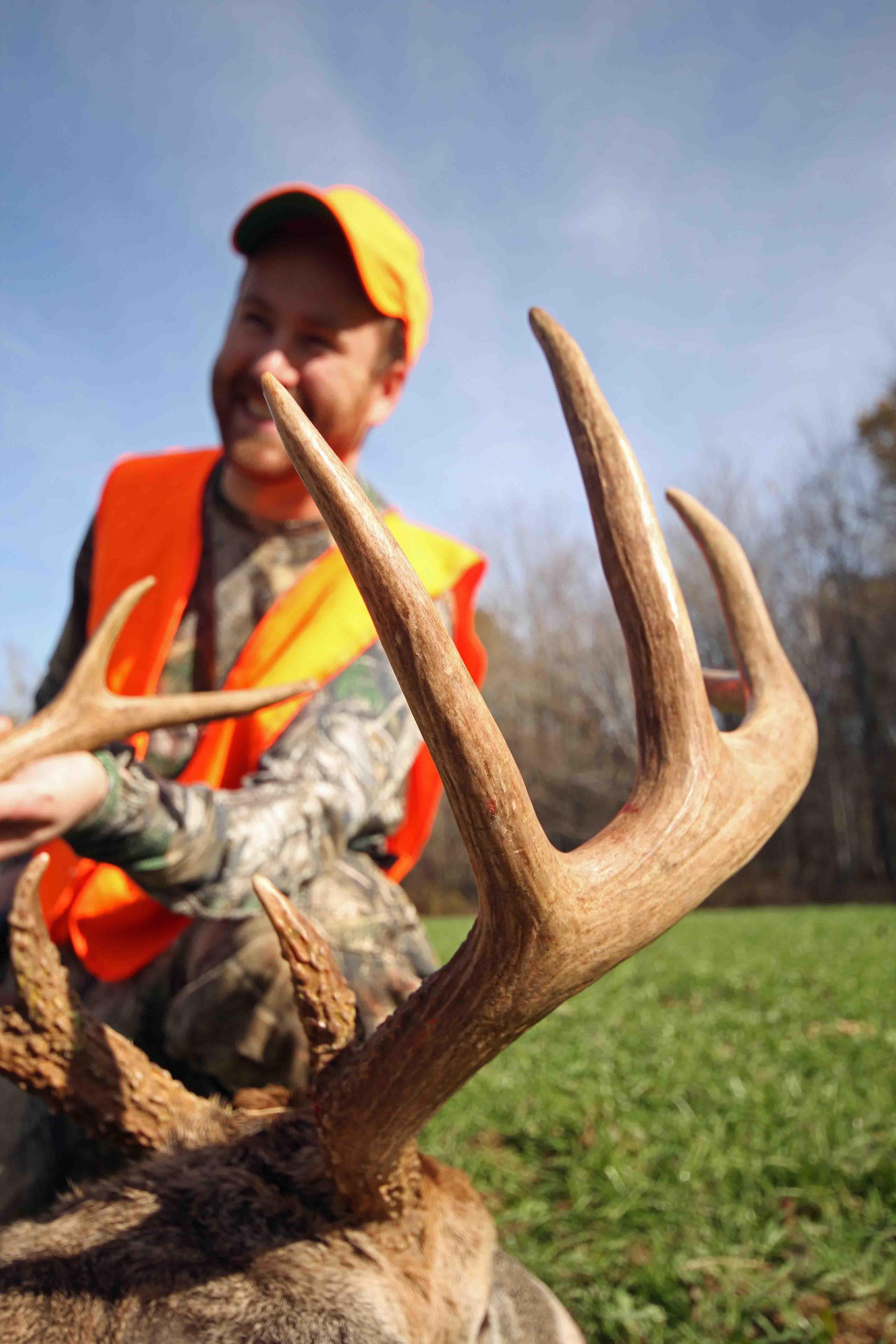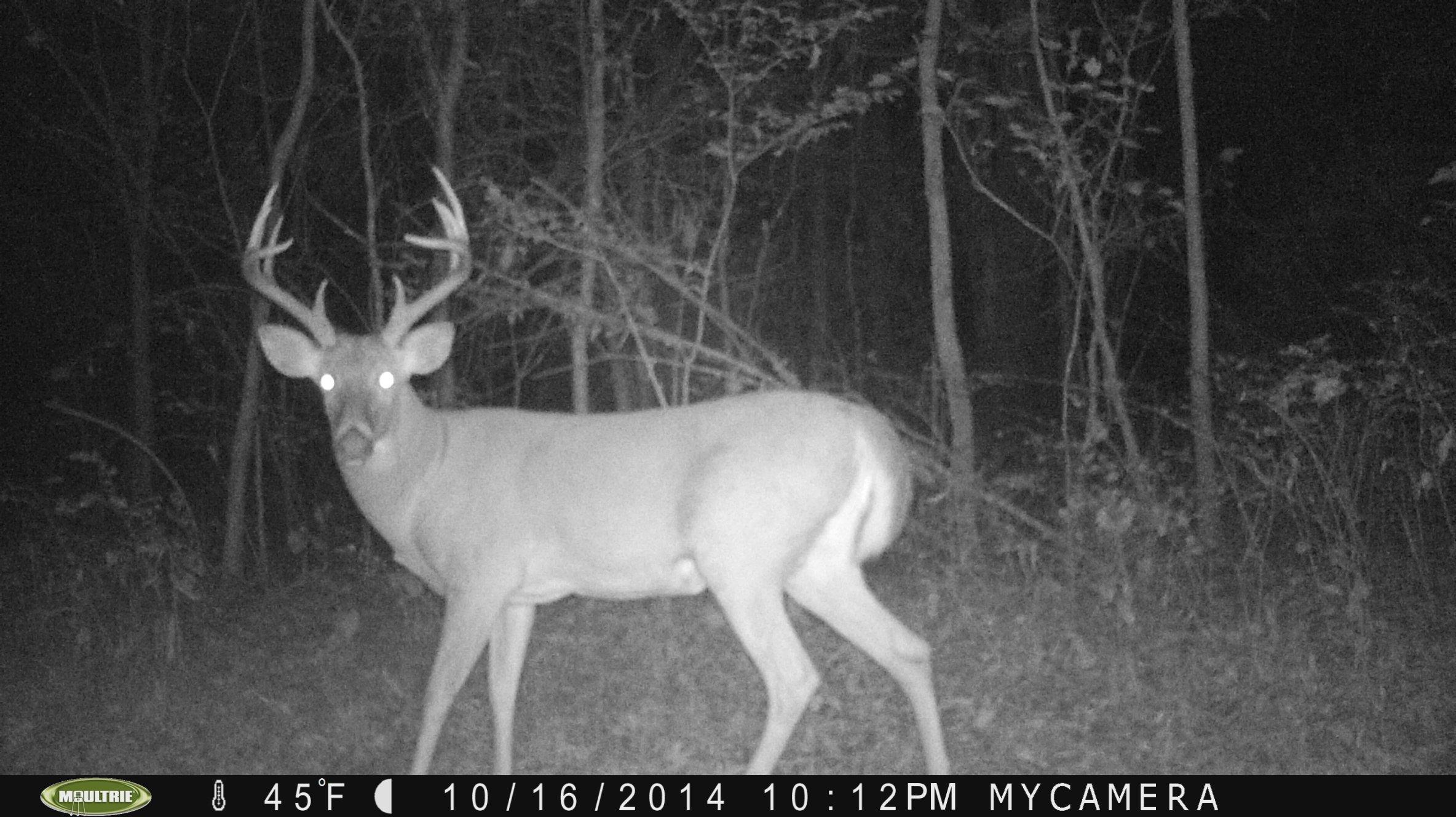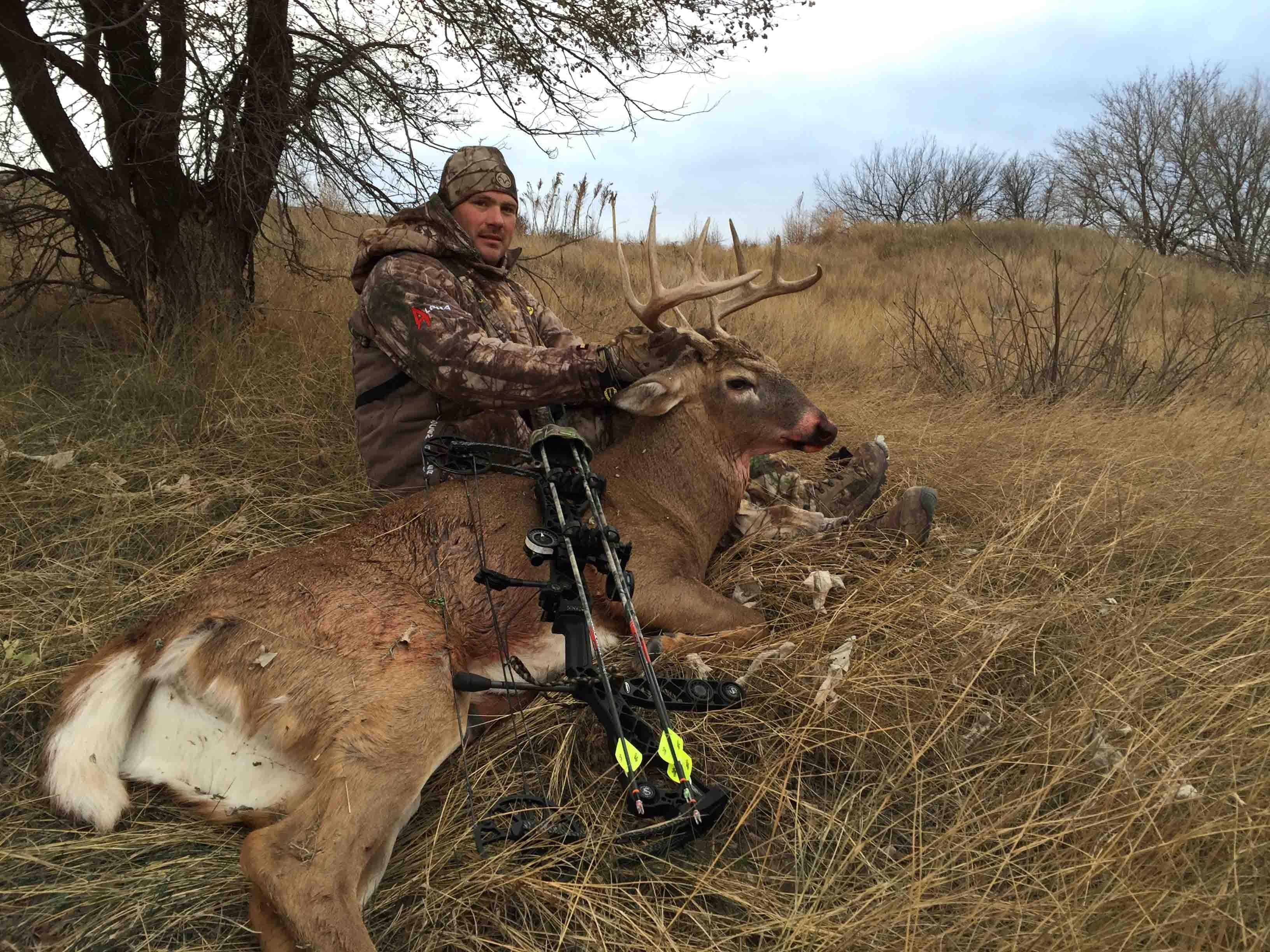So, Did Your Deer Season Really Suck?
Back in August, Tony Hansen and I collaborated on the article 10 Reasons Why Your Deer Season is About to Suck. It was a popular story that got some lively comments, and we had a ball writing it. Probably because it came to us so easily. See, Tony and I are both obsessive—but real world—deer hunters. We do 95 percent of our hunting on small private parcels—usually less than 100 acres—and public land. We hang our own stands, plant our own food plots, and pay our own hunting bills.
In our world (and probably yours), deer hunting can be frustrating. It's frustrating to pay too much money for a deer lease or to watch weeds overtake a food plot. It's frustrating to time a week's hunting vacation—one you've planned all year—with a terrible weather forecast. It's frustrating to not shoot your bow often as you know you should because you have to work. It's frustrating to catch trail camera photos of trespassers. Talking about those aspects of deer season often discounts a story from running in a genteel hunting magazine. But we ran it here, and people seemed to like it.
Yet, for all its frustrations, there's nothing quite like deer hunting. Sure, there's some time left in this season, but we're on the downward slope now. Whether you're still holding a tag or not, it's a good time to reflect. Deer season always has its ups and downs. Things that suck. Whether those things end up ruining the season is universally up to you and how much you're willing to learn from the mistakes and mishaps. And that's what leads to good stories down the road. Here's what we learned in 2014.
Brantley's Lessons
Stay Sharp
Reading back over our original 10 reasons story and comparing it to my season hits me like an uppercut just under the sternum. When Hansen wrote reason No. 5—You Can't Shoot a Deer. Literally.—I knew it didn't apply to me. I'm a pretty good shot. And I've never had trouble keeping it together on deer.
This year was different. I botched a 30-yard shot on the biggest buck I've ever had in front of my bow just days into the season. Some of the blame goes to a range estimation error. Most of it goes to me getting in a hurry when there was no need to be hurried. Regardless, I shot that buck through the backstraps and lost him. And it got in my head—bad. This year, I had more big bucks within bow range than I ever have in a season's time. I screwed them up, time and again.
Looking back, I made a supreme bowhunting error that proved devastating to my season—I was cocky. Being cocky led to rushed shots, and when those rushed shots didn't work out, I rushed some more. My confidence born from a lifetime of a bowhunting was damaged almost beyond repair.
Almost. Tennessee is generous with its deer tags, and I live right on the Tennessee line. I'm building that confidence back, one doe at a time.
Big Bucks are Tough
I immediately recognized the buck I ultimately killed this season when he strolled into a food plot on an early November evening. The buck had been a regular to that food plot all summer, and my wife, Michelle, had a chance at him there just after he shed his velvet. She shot him at 30 yards, and immediately knew she'd only gotten enough penetration for a superficial hit. We never found that first drop of blood.
My neighbor got trail camera photos of the deer several weeks after Michelle shot him. He was carrying on just fine, save for Michelle's arrow hanging in his shoulder. He shed the arrow soon afterward, and stayed mostly nocturnal until November. When he stepped into that food plot in front of me, there didn't seem to be a thing wrong with him. He squared off with another young buck that was already in the field. He was standing in nearly the same spot where Michelle shot him when I let my arrow go.
This is a story that should've had a fairy-tale ending, but it didn't. In the real world of deer hunting, you can't edit out the bad stuff. I gut-shot that buck, and only recovered him because of my neighbor's good graces.
I assumed Michelle's arrow had been a little forward, and a little high. After caping him out, I realized it had been almost perfect. The only explanation for the lack of penetration was that the buck's front leg was slightly back and the buck was slightly quartering away. She caught the edge of the scapula with her broadhead, and it stopped the arrow cold. The wound was barely visible on the outside.
When my younger brother, Matt, killed his stud of a 10-pointer the second day of gun season, we found a fleshed-over bullet fragment in his front right leg. This was an old wound, long-since healed. Matt killed that buck on some ground that borders a public area, so we'll likely never know who shot that buck, when they shot it, or with what.
Bottom line, whitetails in general are tough animals, but a big buck is amazingly so. Hit the right spot, and they're dead within seconds. Miss it by even a few inches, and you won't probably recover the deer. It's black and white. I've always hunted with the mantra take the first decent shot you're sure you can make.
But no more. It's far easier to live with the knowledge that you just didn't get a perfect shot than to live with the knowledge that you had a decent shot, but wounded the animal.
Wild Deer Can't Read
I'm either reading or writing something about deer hunting every business day, and I interview hunting experts from across the country each week. They are experts at a variety of things. Some are archery or firearm experts. Others excel at land management and growing big deer. The experts I admire most are the naturalists; born predators who are good at picking apart new ground and finding deer to hunt within a short window of time.
When you absorb that many different opinions on deer hunting in a year's time, you begin to establish a set of rules—an archetype of sorts—that define what a big deer does and does not do. That information is valuable, but it's never a substitute for the hands-on stuff.
Time and again, I've read that spooking a mature deer will cause him to go nocturnal or even leave an area altogether. Yet, the giant that I shot in September was the first deer to appear that evening. He walked the same path where I'd seen him two days earlier, in broad daylight. That was the same two days earlier when I'd spooked him out of that plot while attempting to sneak out of my stand. I thought spooking him had ruined my chance. It didn't.
On the other end of the spectrum, infrared trail cameras that don't flash are supposedly the best low-impact way to scout for a big deer, particularly late in the summer when deer don't seem to mind having their picture taken anyhow. Yet, I hung one of those cameras over a food plot back in late August, hoping to capture photos and video of a big 8-pointer we'd hunted all the previous season. The big 8 was certainly there—the video revealed that. It also revealed that he not only saw the camera, but was completely freaked out by it. He spooked from that plot, and we haven't seen him since.
Other tidbits include:
- Deer love white oak acorns above all else. Biologists preach it and heck, I've written it 100 times myself. This year, we had a bumper mast crop all over western Kentucky, and the animals had their pick of any acorn they wanted. There were more white oaks than all the rest. Yet, the buck Michelle killed on opening morning of gun season had a rumen full of red oak acorns—supposedly the bitterest variety in the woods.
- I'm an archery gear fanatic, and for the past few seasons, I've been using a single-pin slider sight. I love the clear sight picture it provides on targets, and I love that I can adjust it in single-yard increments clear out to 100 yards. But it took a change back to a plain old 5-pin sight—the kind I didn't have to fumble with at the moment of truth and that gave me a much brighter sight picture in low light—to get back to killing deer with regularity.
- A Tennessee buck—a 2 ½-year-old 7-pointer, smaller than any I've shot since I was a teenager and an animal the land management experts would tell me not to shoot—came charging in to my shooting lane a week ago, after I hit him with a bleat call. I didn't hesitate. I burned a spot in his hide with my 20-yard pin, watched my arrow bury up the vanes and did the silent fist-pump when he piled up at 40 yards. At that moment, I didn't care about all the other stuff I'd read this year. I felt like a bowhunter again. A successful one. That's one of the best feelings in the world -- and proof positive that my season did not suck at all.
Hansen's Lessons
You Wait, You Lose
At the risk of sounding repetitive, I've had a very tough time with time of late. And by that I mean the last 12-18 months. Truth is, I've gotten too busy for my own good. I wasn't ready for deer season and, now that's it's darned near over, I'm just starting to hit my stride.
I employ about a dozen trail cameras on a regular basis. I love them. But this year, my camera work was lackluster and it wasn't until mid-October that I started to utilize them as I should.
I hadn't found a single buck I was interested in shooting at that time, but a good one finally showed itself on a camera set along the edge of a soybean field near a line of oaks that were as laden with acorns as any tree I've ever seen. The buck, a solid 10-pointer, was one I had seen in the past.
For whatever reason, I couldn't make up my mind if he was a deer I wanted to target. The buck visited those oaks every evening - in daylight - for nearly two weeks. And I didn't hunt him.
Why? I'll use the excuse that football practice (I coach my son's team) kept me out of the woods. And that's true. But I could have made time for an outing. I simply didn't, telling myself that I had too much work to do.
When I finally did hunt the oaks, the buck showed up out of range, and he was much bigger than I estimated him to be from the photos. By that time, the oaks had dropped all of their acorns and the deer changed its pattern. I had some close calls with the deer during the rut but failed to tag him. At least not yet . . .
Waiting cost me that deer. I'm convinced if I had simply hunted that buck when the camera revealed a legitimate pattern, I'd have killed him.
It's The Rut, Stupid
I spent a week in Kansas during what I figured would be the prime part of the rut. And it well could have been. But I wasn't able to hunt long enough to really know.
My arrival in Kansas coincided perfectly with a brutal cold front that dropped temperatures 50 degrees in two hours. We started hanging treestands in our t-shirts and 70-degree temps. By the time we got back to the truck, it was approaching 20 degrees and the wind was blowing 50 miles an hour.
The wind would not stop for a week and the temps never climbed above 20 degrees. Sitting in a stand for more than a couple of hours was almost impossible.
I made it until about 9:45 on the first sit on a killer piece of public land. I had intended to stay until noon at least, but howling winds and icy conditions forced me to climb down and try to warm up. As soon as my feet hit the ground, I looked up and saw a giant buck hard after a doe with another big buck trailing right behind. They ran right by me, and I could do nothing but curse the weather as they blew past.
I managed to sit another hour after that but couldn't take it any longer. I left a trail camera in the area. When I checked it a few days later, the biggest typical whitetail I've ever seen alive was on the camera. It had walked right by my stand - 20 minutes after I'd left.
Deer sightings were sparse the rest of the week and I was struggling to stay positive. On the fourth morning, I climbed into a stand and was thinking seriously about packing it in and heading home early. Then I looked up and saw a good buck trailing a doe. I killed it at 25 yards. Just like that, the tide had turned.
The rut is the rut. It can be, likely will be, hours of boredom interrupted by moments of chaos. You simply have to stick it out.
Why I was pondering an early departure is beyond me. I was in a great area with great bucks. And it was November. Sometimes I succeed in spite of myself.
Deer Hunting Is Awesome
I put a lot of pressure on myself to perform. I'm the whitetail editor for one of the biggest outdoor companies in the world. I'm a writer for Outdoor Life, one of the biggest hunting publications on the planet. And I'm the founder of Antler Geeks, a media outlet focused on hunting big deer in heavily-hunted areas.
Right or wrong, I feel that I'm expected to put big deer on the ground every season. And that's just not easy to do.
In recent years, deer hunting has seemed more like work than fun. But my son, Noah, changed that this season.
Noah had never killed a buck entering this season. It wasn't for lack of effort. He's hunted hard and passed on a ton of young bucks. Why? I'm not sure. I've never pressured him to hold out for a big buck. He makes his own decisions when it comes to that. And he's always chosen to wait when presented a shot at a young buck.
On a brisk November morning, the right buck finally made an appearance. It was clearly on the prowl for a hot doe as it passed by our stands at 12 steps. Noah drove a broadhead through the buck's lungs like he'd been doing it for years. The arrow lay on the ground, covered in crimson. An obvious blood trail was visible from the stand. While the buck did run out of sight, we both knew that deer was dead. Finally.
It was, without exception, the best hunting experience of my life, one that will never be topped.
It was fun. Pure, blissful fun. We high-fived. Hugged. Laughed. Dared not believe that what had happened really had happened until Noah wrapped his tag around the buck's antlers.
It wasn't a giant buck but it was his first and, yeah, it's bigger than a lot of Michigan hunters will ever tag in their lifetime. The experience, the day, the hunt was incredible. Special beyond words.
Deer hunting, as Noah said while we loaded the buck into the truck, is awesome. I can't say that any part of it sucked at all.












